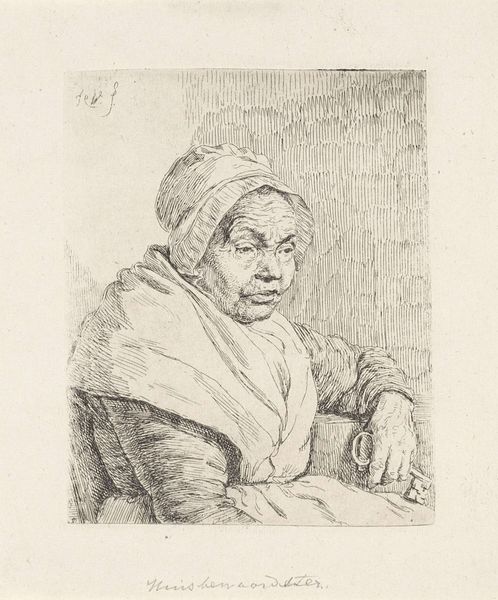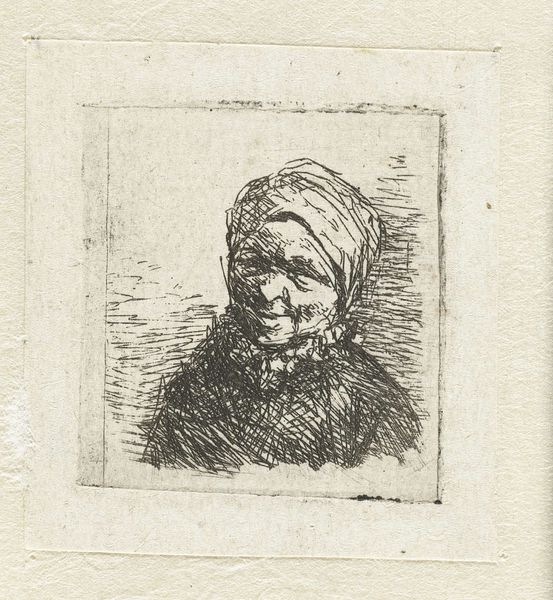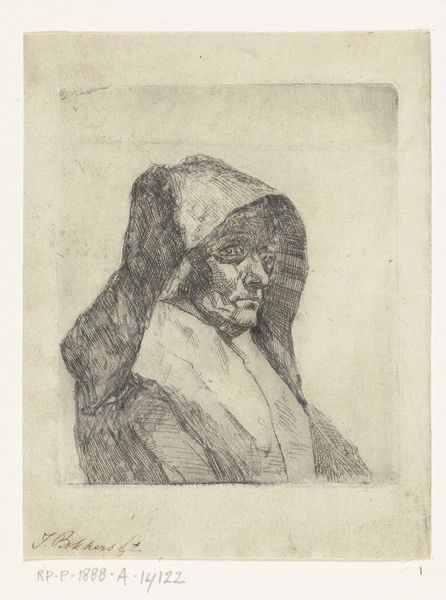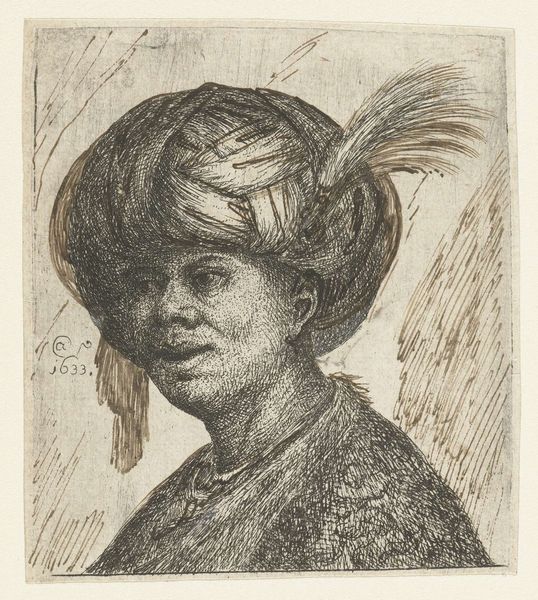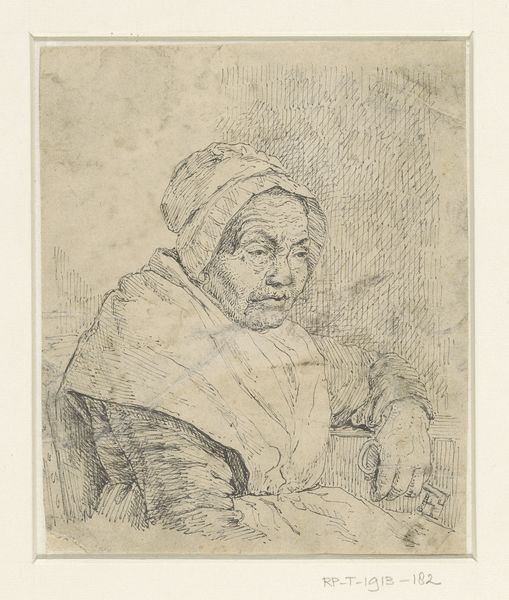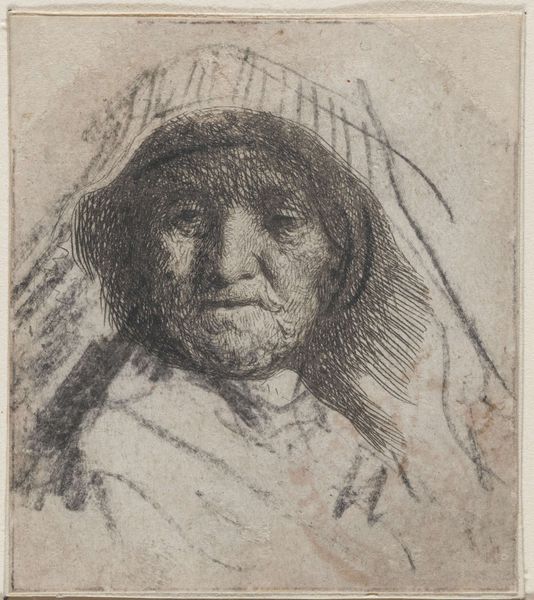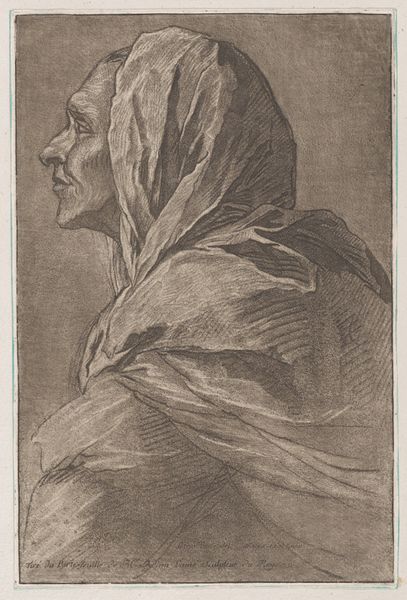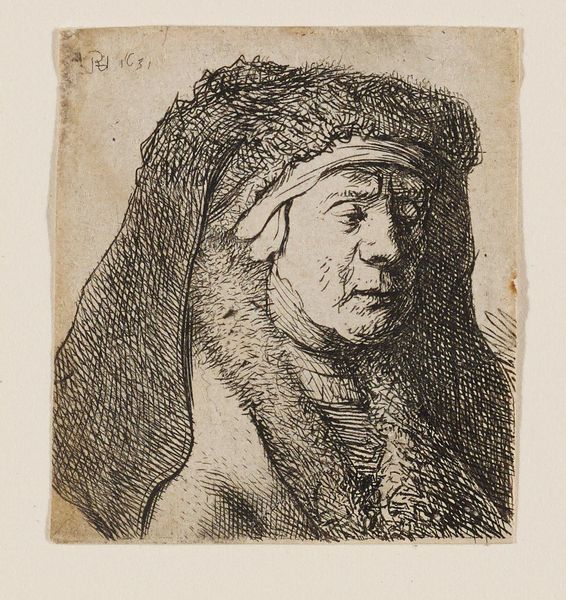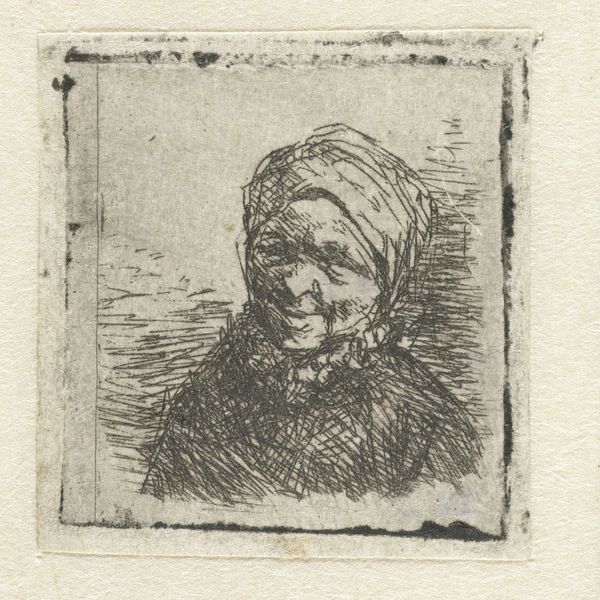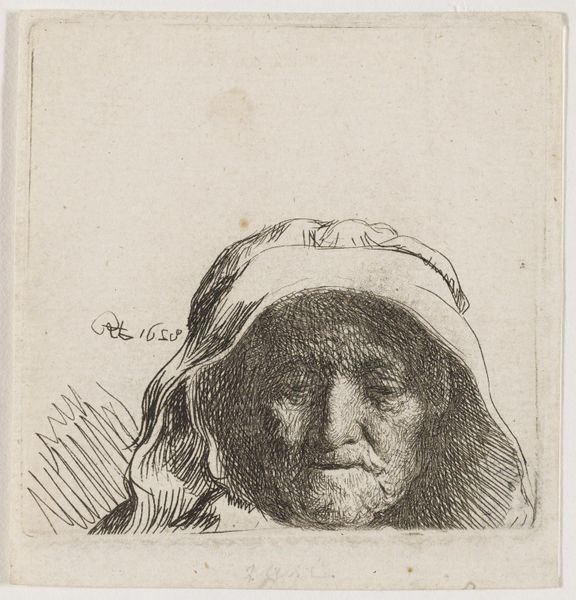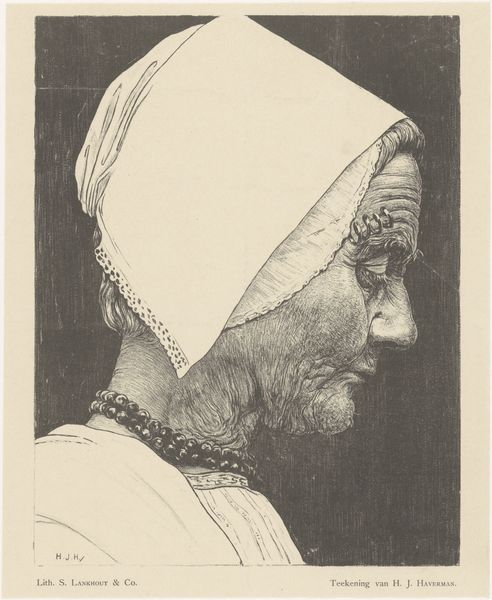
print, etching
#
portrait
#
baroque
# print
#
etching
#
genre-painting
Dimensions: height 99 mm, width 79 mm
Copyright: Rijks Museum: Open Domain
Curator: Here we have an etching by Carel de Moor the Younger, "Oude vrouw met een kapje op haar hoofd"—or "Old woman with a cap on her head." It was likely created sometime between 1665 and 1738, offering a fascinating window into Baroque portraiture through the lens of printmaking. Editor: The mood of this work is contemplative, almost melancholic. There’s a strong focus on the textures, the fabric of the headdress, the ruff around her neck. I’m struck by the lines, they’re so assertive and direct. Curator: That directness speaks to the print medium itself. Etchings allow for detailed linework. The way De Moor utilizes the medium reflects an increasing interest during that era in realism. There was a growing desire amongst both the wealthy bourgeois classes as well as nobility to have imagery that spoke more to everyday people and everyday life. Editor: Exactly, but this also opens questions of representation. Who is this woman? Is this portrait flattering or does it reduce her to a type? Is she a caricature? Curator: It is interesting you ask that. When examining artworks through a historical context, it’s very common to assess how an individual of the lower classes was publicly perceived at that time. The politics of portraiture back then heavily emphasized idealization for those of the upper classes. When focusing on genre paintings from the Baroque Era it can be easily stated that for many in the lower working classes and/or elders there was less incentive to display the people being presented through “rose colored glasses”. This allows them to express the emotional labor involved in simply going through everyday life. Editor: Absolutely. What is particularly compelling is how de Moor frames her. It evokes complex associations when seen today and forces a discussion between contemporary understanding of lived realities and history painting. This print offers a window into that period's social complexities and artistic techniques. Curator: A lasting commentary. It's pieces like these that give us pause when examining art throughout history and allow us to contemplate how it may be displayed in museum spaces. Editor: Precisely, they also spark new paths for interpreting historical images through intersectional lenses that highlight representation and difference.
Comments
No comments
Be the first to comment and join the conversation on the ultimate creative platform.

